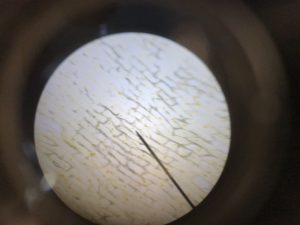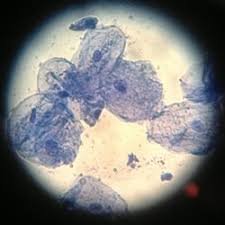lesson 1:
1 word describing your dominant emotion in the lesson.
interested. I was interested because of all the new information on what I researched throughout the lesson.
1 photo that might summarise something you learned in the lesson

1 thing that this learning point might relate to anything in your future life. (doesn’t have to be science)
this information I learned can influence how I think about the way things around me work and move.
Lesson 2:
Cell photo (onion)

a practical skill I found difficult.
Getting the microscope in focus and for us to get the cells in the best photo.
New knowledge
I found out that an onion skin is a good way to find and explore the cells of a substance.
One question that was not answered.
Why is it just the onion skin, not the rest of the onion?
Lesson 3:
Cell photo (plant)

Cell photo (cheek)

To figure the length of one cell, divide the number of cells that cross the diameter of the field of view into the diameter of the field of view. For example, if the diameter of the field is 5 mm and you estimate that 50 cells laid end to end would cross the diameter, then 5 mm/50 cells = 0.1mm/cell.
Lesson 4:
one thing I already knew.
That both plants and animals have cells which contain a nucleus.
Mesophyll cell.

one thing that might be difficult with the content of this lesson.
Remembering all the different organelles of each human and plant cells and knowing how to label the cells.
How can I work on this?
I can regularly revise and practice this task so this knowledge sticks with me.
Lesson 5:
Diffusion
two keywords.
- diffusion
- semi-permeable membrane
- diffusion of oxygen and carbon dioxide occurs in the lungs
- diffusion of water, salts and also waste products occurs in the kidneys.
Lesson 6:
Osmosis.
List of tasks.
- video
- read (booklet)
- play games
- test
I thought the videos and the test were most useful to me because the video explained the lesson well and gave me the information and the test gave me a feel of what type of questions I need to work on.
Ratings. (out of five)
a. focus = 4
b. learning = 4
c. timekeeping = 4
Lesson 7: plasmolysis
Plants gain water through their roots through the process of osmosis.
since the soil has a high concentration of water, the water travels into the roots until they both have the same amount of concentration of water. however, the plant brings the water up, which was transferred into the roots and into the plant, therefore the plant keeps receiving water, due to the constant low concentration of water in the roots.
Something to remember:
Hypotonic solution
- high concentration of water
- low concentration of solutes
Hypertonic solution
- high concentration of solutes
- low concentration of water
Lesson 8: revision
The picture shown on the slide is a skin cell.
I know this because of:
- the young to old scale
- the dead skin cells that are shown.





Recent Comments